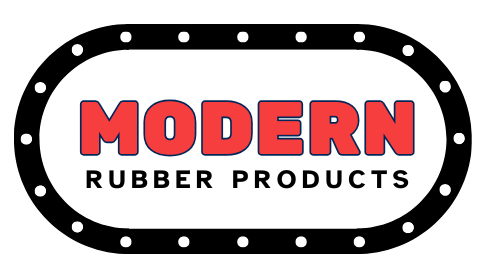
How to Choose the Right Gasket Cutting Method: CNC vs. Waterjet vs. Die Cutting
Share
When your equipment requires precision gaskets, seals, or custom-cut components, choosing the right cutting method can make the difference between a perfect fit and costly downtime. Whether you're working with rubber gaskets, PTFE seals, felt washers, foam insulation, or compressed fiber materials, the cutting technique directly impacts quality, cost, and lead time.
As a leading gasket manufacturer in the US, we regularly help clients navigate the decision between CNC knife cutting, waterjet cutting, and die cutting methods. In this comprehensive guide, we'll explain how each gasket cutting method works, when to use each technique, and how to select the optimal approach for your specific application and materials.
What is Gasket Cutting, and Why Does the Method Matter?
Gasket cutting is the precision manufacturing process of shaping sealing materials into exact specifications for industrial applications. Modern gasket manufacturers use three primary cutting technologies: CNC knife cutting, waterjet cutting, and traditional die cutting.
The cutting method matters because it affects material waste, edge quality, production speed, tooling costs, and the ability to achieve tight tolerances. Different materials like rubber compounds, PTFE, felt, sponge materials, and compressed fiber respond differently to each cutting technique, making method selection crucial for optimal results.
How to Choose the Right Gasket Cutting Method
CNC Knife Cutting for Gaskets
Best for: Soft materials, prototype gaskets, short runs, complex geometries
CNC knife cutting uses computer-controlled blades to precisely cut through gasket materials without heat or water. This method excels with:
- Rubber gaskets (silicone, EPDM, neoprene, nitrile)
- Foam materials (polyurethane, polyethylene, neoprene foam)
- Felt washers and seals
- Thin compressed fiber gaskets
- Sponge rubber materials
Advantages:
- No tooling costs for prototypes or custom gaskets
- Quick turnaround for urgent gasket orders
- Excellent for complex shapes and intricate cutouts
- Clean, smooth edges on most rubber materials
- Ideal for gasket manufacturers handling diverse, low-volume orders
Limitations:
- Slower than die cutting for high-volume production
- Material thickness limitations (typically under 1 inch)
- May require secondary finishing on some materials
Waterjet Cutting for Gaskets
Best for: Thick materials, hard materials, extreme precision requirements
Waterjet cutting uses high-pressure water (sometimes with abrasive) to cut through gasket materials with exceptional precision. This method is optimal for:
- Thick rubber sheets (up to 4" thick)
- PTFE gaskets and seals
- Dense compressed fiber materials
- Hard plastic gasket materials
- Metal-clad gaskets
Advantages:
- Cuts virtually any gasket material regardless of hardness
- Extremely tight tolerances (+/- 0.015 inches)
- No heat-affected zones (critical for rubber materials)
- Smooth, finished edges requiring no secondary operations
- Excellent for thick gasket applications
Limitations:
- Higher per-piece cost for thin materials
- Slower cutting speeds than other methods
- Not cost-effective for high-volume production of simple shapes
Die Cutting for Gaskets
Best for: High-volume production, standard gasket shapes, cost optimization
Die cutting uses steel rule dies or solid dies to stamp out gasket shapes, similar to a cookie cutter. This traditional gasket manufacturing method works well for:
- Standard gasket sizes and shapes
- High-volume rubber gasket production
- Simple foam gasket shapes
- Felt washers in standard configurations
- Basic sponge rubber gaskets
Advantages:
- Fastest cutting method for high volumes
- Lowest per-piece cost for large quantities
- Consistent, repeatable results
- Excellent for standard gasket inventory
Limitations:
- High upfront tooling costs
- Inflexible for design changes
- Limited to simpler geometries
- Not economical for prototype gaskets or small quantities
Tips and Reminders for Choosing Gasket Cutting Methods
When working with a gasket manufacturer, consider these key factors:
Material Compatibility: Rubber compounds may compress differently under die cutting pressure, while PTFE materials cut cleanly with waterjet but may tear with knife cutting. Always discuss material-specific recommendations with your gasket cutter.
Volume vs. Precision Trade-offs: CNC knife cutting offers the best balance of precision and flexibility for custom gaskets, while die cutting excels at high volumes. Waterjet provides the highest precision but at a premium cost.
Lead Time Considerations: CNC knife cutting typically offers the fastest turnaround since no tooling is required, making it ideal when you need gaskets quickly for maintenance or emergency repairs.
Total Cost Analysis: Consider both tooling costs and per-piece pricing. A die might cost a hundred dollars to upwards of one thousand depending on the amount of punches.
Design Flexibility: If your gasket design might change or you need multiple variations, CNC knife cutting provides the most flexibility without additional tooling costs.
Selecting the right gasket cutting method depends on your specific application requirements, material properties, quantity needs, and timeline constraints. CNC knife cutting offers versatility and quick turnaround for custom gaskets, waterjet cutting provides unmatched precision for challenging materials, and die cutting delivers cost-effective high-volume production.
The best gasket manufacturers in the US typically offer all three cutting methods, allowing them to recommend the optimal approach for each project. When evaluating gasket cutters, look for companies that can guide you through this decision process and provide samples using your preferred cutting method.
Need help choosing the right cutting method for your gasket application? Our gasket manufacturing experts are ready to analyze your requirements and recommend the optimal cutting technique for your materials, quantities, and timeline. Contact us today for a free consultation and quote on your custom gasket project. We offer CNC knife cutting, waterjet cutting, and die cutting services with fast turnaround times and competitive pricing.
To get started, contact us at info@modernrubberproducts.com
